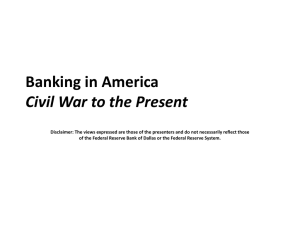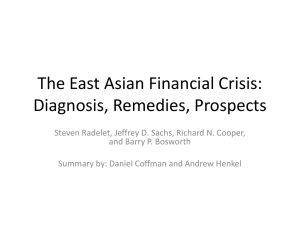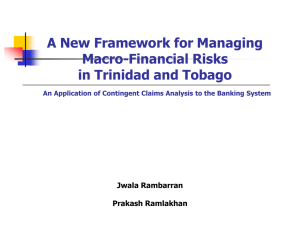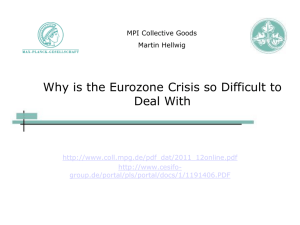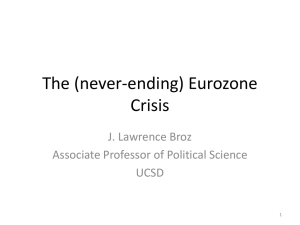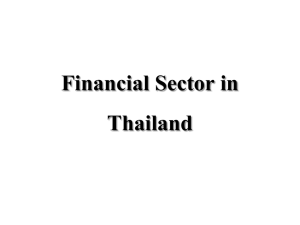THE POWER TO CREATE MONEY - First International Social
advertisement
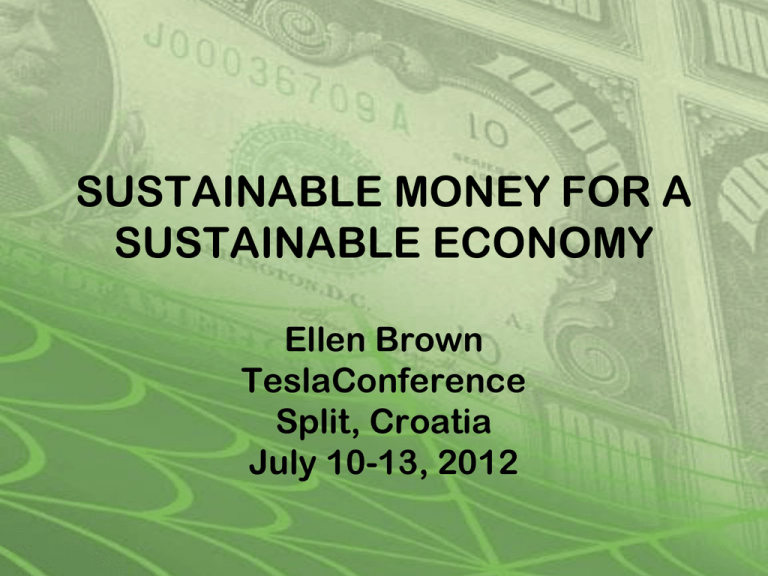
SUSTAINABLE MONEY FOR A SUSTAINABLE ECONOMY Ellen Brown TeslaConference Split, Croatia July 10-13, 2012 Two competing money systems have vied for dominance for thousands of years. • Money created privately by moneylenders or banks • Money created publicly by communities or governments Publicly-created money used as a unit of account is actually older and more sustainable than private money trading as a commodity (gold). • The ancient Sumerians and Egyptians used no money at all – just an accounting system. • Money was not a “thing” but a relation: accounting and the thing counted were inextricably joined. Egyptian grain banks • Receipts for deposits were written on pottery, which served as a medium of exchange. • Not valuable in themselves, and they didn’t pay interest. Interest was paid by the depositor rather than the bank. Money as a tool of empire: gold and silver coins • With coins and then paper banknotes, money became a “thing” independent of the goods it represented. • It could be horded, manipulated, and lent at usurious interest rates. • Not sustainable: Unrepayable debt led to slavery; empires crumbled under its weight. Medieval Italian bankers expanded the money supply with “bank credit” . . . • But it was sleight of hand, because “backed” by insufficient quantities of gold; and the bankers periodically got into trouble for it. Public banks countered the abuses of the private usury banks • Bank of Venice and other city-owned banks • “Mons pietatis” – charitable public banks to serve the poor – evolved into European local public and cooperative banks. Medieval England: moneylenders’ gold vs. tally sticks • Abuses caused the moneylenders to be evicted in the 13th century. • Government-issued tally sticks were the money of the people for 700 years (1100 to 1834). • A unit of account rather than store of value. In the 17th century, however, the moneylenders were readmitted to England; and in 1694, the Bank of England was chartered . . . The Bank of England circa 1740 . . . when William III, a Dutchman, needed money to fight a war. The bank lent banknotes redeemable in gold, on a “fractional reserve” system. Only the interest had to be paid. In effect, the national currency was rented from private bankers. American colonies: The Bank of England’s gold-backed notes competed with colonial paper scrip Benjamin Franklin: The Father of Paper Money The colonial model • Precious metals were scarce, and the colonists resisted taxation. • Government-issued bills of credit solved those problems but sometimes created another: inflation. • Government-issued credit, repaid at interest, solved all 3. The Pennsylvania land bank: bills of credit were issued by the government and LENT to the farmers at interest. The result: • No taxes • No inflation • No government debt • Highly sustainable (vs. today’s unsustainable system) Government prints $105 Lends $100 @ 5% interest Spends $5 on budget, infrastructure $105 circulates in economy; comes back to government as principal and interest Government lends $100 @ 5% interest Spends $5 on budget, infrastructure What happened to the colonial model? Imprudent money-printing in some colonies led the King to forbid them to create new issues of scrip. Pennsylvania was allowed to carry on -- until Franklin went to London to plead the case. He let the cat out of the bag: government-issued money and credit were the road to prosperity and independence. The Bank of England leaned on King George, who forbade new issues of scrip in the colonies, precipitating a depression and the American Revolution. The colonists won the Revolution but lost the power to issue their own money. Private banks issued banknotes at interest on the fractional reserve (counterfeit) model. Abraham Lincoln restored the governmentissued paper money of the American colonists but was assassinated. The Federal Reserve was instituted in 1913 on the Bank of England model. But public banking was successfully pursued in other ex-British colonies – Australia, New Zealand and Canada – until the Bank of England again suppressed it. The Commonwealth Bank of Australia was wildly successful . . . until Governor Denison Miller, like Franklin, made the mistake of touting its virtues in London, killing the golden goose. The birth of “central banking” • Alarmed, the Bank of England devised a new plan: it would arrange for a system of “central banks” to take over the power to issue national currencies. • This money would be LENT to the government and people. • The apex of the system would be the Bank of England. Bank of England Central bank Treasury • The BOE sent Sir Otto Niemeyer to advise Australia and New Zealand. • In 1937, he became chairman of the Bank for International Settlements in Switzerland. • The apex of the system also moved to the BIS, as revealed in 1966 . . . The BIS game plan was revealed by Prof. Carroll Quigley of Georgetown Univ., who wrote in “Tragedy and Hope”: “The powers of financial capitalism had another farreaching aim, nothing less than to create a world system of financial control in private hands able to dominate the political system of each country and the economy of the world as a whole. . . . “The apex of the system was to be the Bank for International Settlements in Basel, Switzerland, a private bank owned and controlled by the world's central banks which were themselves private corporations. Each central bank . . . sought to dominate its government by its ability to control Treasury loans . . . .” • That was the plan, but the Reserve Bank of New Zealand was taken over by a money reform party and used to issue “national credit.” • Again the experiment was hugely successful, until the BOE intervened: NZ would be cut off from trade with the Commonwealth if it did not cease these “unsound practices.” • The Commonwealth had no control over the Germans and the Japanese, who were also issuing “national credit” and thriving, while the rest of the world suffered a major depression. • Like the American colonists, they were stopped by war. Japan gets universal electrical power, 1935. Canada, however, was carrying on with the public banking model, very successfully. • In 1935, the Bank of Canada Act allowed the Canadian Central Bank to create the credit to finance federal and local projects. • It did this from 1939 to 1974, again to brilliant effect. Major government projects were funded with national credit • aircraft production • education benefits for returning soldiers • family allowances • old age pensions • the Trans-Canada Highway • the St. Lawrence Seaway project • universal health care. In 1974, the Canadian Government quit borrowing from its own central bank. Result: by 2000, the federal debt had shot up to $585B. What happened in 1974? The Basel Committee was established by the central-bank Governors of the Group of Ten countries of the BIS. • Canada joined the BIS and the Basel Committee the same year. • One of the key objectives of the Committee was to “maintain the stability of the currency.” • That meant no more printing money or borrowing from the nation’s own central bank. Borrowing had to be private. • It was based on a bogus argument . . . The presumption was that government-issued money was inflationary, while money borrowed privately was not. But private-bankcreated money is actually MORE inflationary than government-created money, and it comes with an interest charge. Private banks create the vast majority of the money supply today, and they create only the principal, not the interest, on their loans. paulgrignon.netfirms.com . To find the interest, more debt must be taken out. It’s an unsustainable pyramid scheme. •www.answers.com Without interest, even a large federal debt might be sustainable. Without interest, there might not be a national debt. • U.S. debt is $15T. $8.2T has been paid in interest in 24 years. $15 Trillion Debt Interest $8.2 Trillion http://www.treasurydirect.gov/govt/reports/ir/ir _expense.htm • France’s debt increased 1.35 Euros since 1973. 1.4B Euros paid in interest since then. https://www.youtube.com/watch?v=P8fDLyXX UxM&feature=player_embedded 1.4B Euros $1 Trillion $481.5 Billion 1.35B Euros • Canada had a debt in 2006 of C$ 481.5 billion, and had paid almost C$ 1 trillion in interest since 1961. http://www.enterstageright.com/archive/article s/1006/1006cdndebt.htm Could the colonial model eliminate income taxes today? Yes! • Total income taxes paid in 2011: $1,100 billion. • Total interest collected by banks: $725 billion. • Total interest paid on federal debt: $454 billion. • Thus interest could replace income taxes -if banking were a public utility . . . 1400 1200 1000 800 bank int. fed int. 600 400 200 0 total total inc tax interest How local governments can cut out interest: borrow from their own publicly-owned banks. Only one U.S. state actually owns its own bank – North Dakota. • It is also the only state to escape the credit crisis, sporting a budget surplus every year since 2008. • It has the lowest unemployment rate, foreclosure rate, and default rate in the country. Proving the model globally -The BRIC countries also escaped the credit crisis. Public sector banks predominate in the BRICs. The BRIC countries want a new global reserve system – and have the clout to get it. • The Chinese have proposed a return to Keynes’ idea – an International Currency Union. • Trade balances would be cleared, not with a reserve currency, but with a global currency unit (the “bancor”). How to value the currency yardstick? • Basket of commodities (Keynes) • Basket of currencies • Green energy units • Consumer price index • Purchasing power parity We will have come full circle . . . As in Sumeria, money will be simply a unit of account and medium of trade. If banking were made a public credit clearing system, with profits and interest returning to the public, banking would be sustainable. For more information – PublicBankingInstitute.org WebofDebt.com






